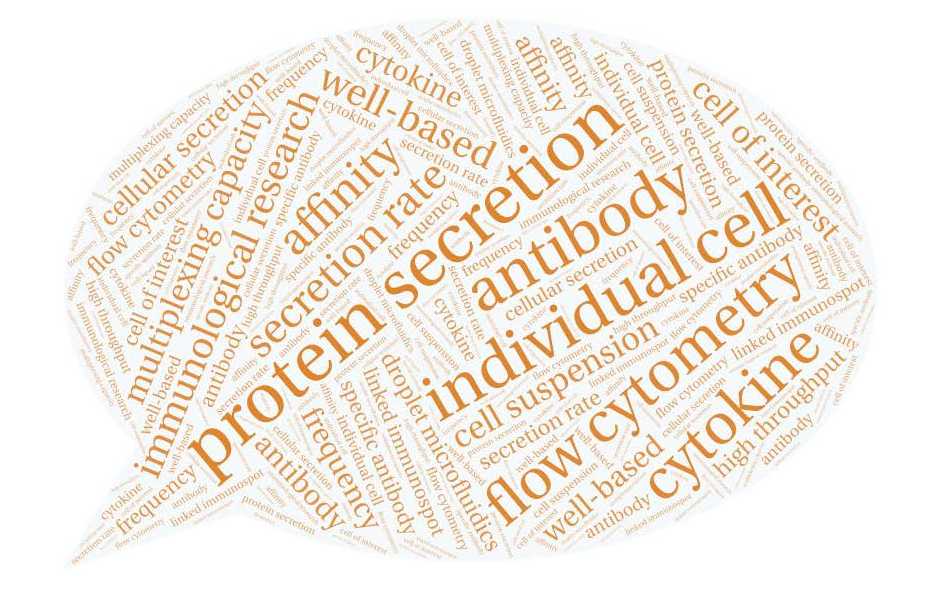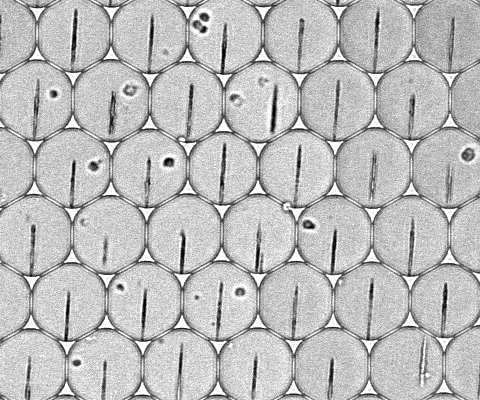Technology - High-content functional characterization of individual cells

Interested in functional single-cell analysis of immune cells? Olivia and Inga wrote an excellent review on the topic found external page here.

Microfluidics is advantageous to study the function of individual cells due to the high fluidic control and small volumes; and the ease of handling individual cells in droplets or small chambers. Recently, we developed an approach that measured cellular functionality with single-cell resolution, called ‘DropMap’ (Eyer et al., Nature Biotechnology, 2017). The technology uses droplet microfluidics to encapsulate individual cells in picoliter water-in-oil droplets.
The use of droplet microfluidics enables the generation of millions of single data points within a short amount of time, typically from around 104-6 individual cells. Due to the compartmentalization of cells into small volumes (50 pL), the system is ideal to analyse cellular functionality without interference from other cells. Within the immune system, functionality is often linked to secretion or expression of membrane bound molecules; and both can be assayed within the system.
Due to the small volume within the droplet, dilution is minimized, controlled and a measurable concentration of the secreted molecule is achieved in a short period (minutes). This speeds up the analysis and assay run time, and eases cell handling and bias due to the shorter timeframe. An analysis time below one hour further opens the possibility to run several samples per mouse and day, increasing throughput and resolution of the immune reaction. In the last years, we were able to integrate a variety of assays that measure cellular functionality; assays that enable the quantification of functions of a variety of immune cells: B-cells, T-cells, neutrophils, monocytes, cell lines, cancer cells, amongst many others.
This technology is our usual basis for assay development and most of our current applications.